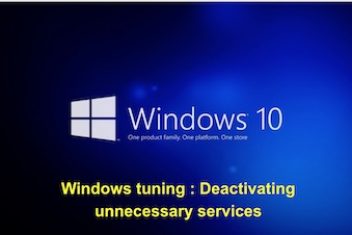By Stephen Bitsoli – Technology is advancing at lightning speeds. Telehealth and telemedicine platforms and the cloud are working together to enhance medical care and bring it to a whole new level.
With the introduction of the cloud—a network of remote internet servers around the world—vast amounts of data can be easily collected, secured, stored, accessed, and retrieved using almost any type of electronic device, from smartphones to desktop computers.
Most medical facilities store patient records in the cloud, making them accessible to both the patient and other medical professionals. They use HIPAA compliant file-sharing system.
With this technology, the healthcare industry has started to practice telehealth or telemedicine: video conferencing as a way to interact with patients when in-person consultations aren’t possible or feasible, such as during the COVID-19 pandemic.
Using cloud storage, doctors can now interact with patients over the internet using video calls or live streams. Diagnoses can be made and treatment options discussed in much the same way as an in-office visit.
Read: How to Utilize Telehealth Services
The Benefits of Telehealth and Working Within the Cloud
There are several benefits to using the cloud within the health and medical fields, including:
- When patient files are stored in the cloud, both the patient and their medical team have immediate access to them.
- Patients who need medical assistance can schedule a virtual meeting held over a video chat or conferencing platform.
- The medical professional can access the patient’s records during the call, allowing them to provide the best possible care and create the most effective, personalized treatment plan.
- Using electronic health records is cost-effective for everyone involved.
Read: Cloud storage: What you need to know
Patients Have Access to Their Own Medical Records
Storing medical records within the cloud gives patients the ability to sign in to a medical system’s website to access their medical records. It allows patients to play an active role in their healthcare.
On the other hand, it gives medical professionals quick access to a new patient’s medical history. It also allows them to read any notes from previous doctors’ visits.
The convenience the cloud offers for both patients and healthcare providers makes it an incredibly valuable tool.
Security Risks and Concerns
While there is some concern over the security measures and protocols being used to protect this highly confidential information, if they are compliant with the Health Insurance Portability and Accountability Act (HIPAA), storing information in the cloud may pose fewer security concerns than physically storing them at hospitals.
Two-step authentication and biometric sign-on methods (face recognition, fingerprint, and eye scans) can make them much more protected.
Quality Healthcare From Anywhere
By using the cloud and the telemedical platforms, patients can receive much-needed care from anywhere, even if they are hundreds of miles from home.
In emergencies, being able to access a patient’s medical records is essential. Not only will they have access to the patient’s medical history, but the files can be accessed through communications sent between medical professionals and updated in real-time.
Read: How Technologies Changed The Healthcare Industry
Telehealth and Recovery Programs
Another valuable use of telehealth services is for substance abuse treatment. Telehealth programs are ideal for use in outpatient recovery programs. It encourages accountability on behalf of the patient while still allowing them to seek the treatment they need to overcome their health issues.
During recovery, patients can receive the counseling they need from reputable medical professionals who have access to the electronic health records they need to provide quality care.
Many patients in recovery don’t seek treatment for their substance abuse because the nearest recovery center is too far away.
By using the cloud and telemedical platforms, patients can get the care they need right from their mobile devices. Many can get a referral simply by visiting their primary care physician.
If you like the content, we would appreciate your support by buying us a coffee. Thank you so much for your visit and support.



